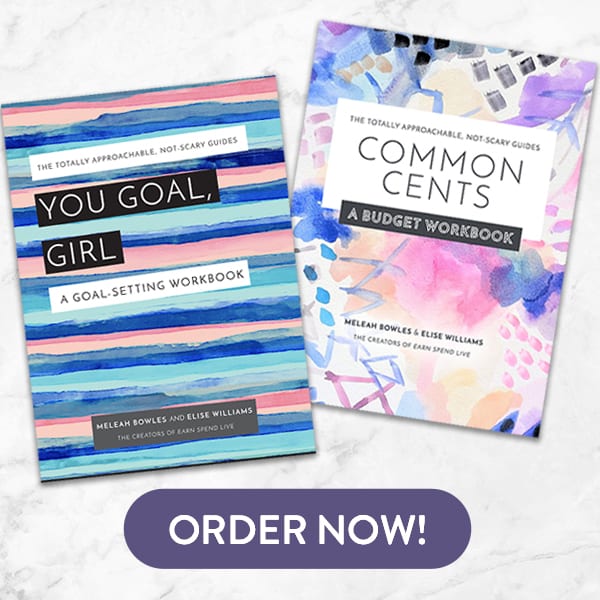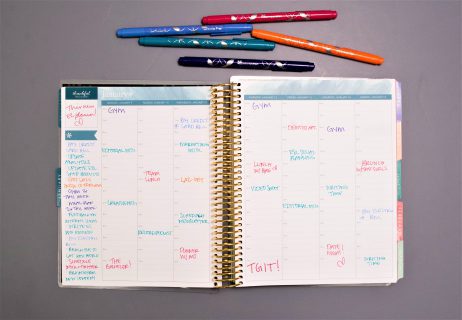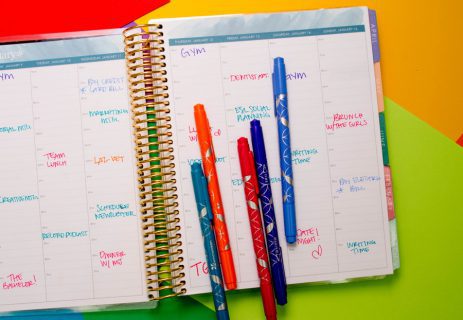How to Choose a Planner

Whether you’re wanting to try a new planner or looking to purchase your first one ever, there’s a lot to consider. There are so many planners on the market that it can be overwhelming to know where to even start. But don’t worry — you can wade through the options with ease by following these simple steps for how to choose a planner.
Step 1: Decide What You Need From a Planner
This is the most important thing you can do when choosing a planner. If you don’t know what you need, then your planner may not be as helpful as you need it to be. So sit down and write down a list of the things you need your planner to do for you. Some possibilities are:
- Scheduling
- Meal tracking
- Goal setting
- Family management
- Note taking
Write down everything you need help with, in no particular order. After you’ve done that, rewrite the list from most to least important. This will make it easier to hone in on your planner options and eliminate the ones that won’t fit your most important needs.
Step 2: Choose Your Desired Features
Once you’ve identified your needs, you have to decide which features satisfy those needs. For example, if you need space to write down notes, you need to decide if you want full note pages in the planner or just a space for notes on each day or week. Think about whether or not you want a larger or smaller planner, a folder, hard or soft cover, laminated tabs, monthly planning pages, and other extra features, like design customization/personalization, party planning, and budgeting.
Again, rank these features from most to least important. This practice helps you further decide what it is you’re truly looking for in a planner, rather than just thinking about the basics. There are so many different planners available, and even though many of them look similar (or even identical) each planner is unique. Because of this, when trying to figure out how to choose a planner, it’s easy to pick a planner that seems like the right fit but is actually all wrong for your particular organizational needs.
Step 3: Set a Budget
Budgeting is an essential part of any decision. When it comes to planners, it’s a major factor in deciding how to choose a planner and whether or not certain features are worth the price tag. Look at your budget and set a maximum you’re willing to spend. You also need to decide what your ideal price to pay is for the planner you want. This will depend on how important a planner is to you and how comfortable you are spending money on it. Personally, I’ve shelled out $70 for a planner (that includes shipping) that I knew would give me almost everything I needed and would be sturdy enough to last all year.
Keep in mind that you will have to pay more money for a planner that has “fancier” features (a.k.a. customization, hardcovers, extra planning pages, etc.). If you only feel comfortable spending $20 on a planner, then you’re going to have to give up goal setting pages, budgeting worksheets, and hardcovers. (Unless you find some kind of planner-unicorn, in which case please leave a comment and tell me where you found it.)
Step 4: Research Different Planners
Now this is where it gets fun. Once you know what type of planner you’re looking for, you can start taking a more in-depth look at the different brands that are offered. Here at Earn Spend Live, we have reviewed over 30 planners, including daily, weekly, monthly, academic, fitness, etc. — so there’s a pretty comprehensive list to get you started on your search for how to choose a planner.
Reading an in-depth review can really help if you’re considering choosing a certain planner that’s a bit out of your price range, or if you’re stuck between two similar planners. Seeing pictures of the planner in use and reading about the most effective ways to use it can either sell you on the planner or make you realize it’s not right for you and save you money.
Step 5: Take Advantage of Free Downloads
After you’ve done all the research you can stand and found a few contenders, I recommend taking advantage of any free downloads the company offers. Not every planner company does this, but there several that do (like Day Designer and The Simplified Planner). In fact, when I was trying to figure out how to choose a planner for myself two years ago, I was torn between the Day Designer and The Simplified Planner. So I printed out a week’s worth of both downloads and used each for a full week. It helped me see firsthand the pros and cons of each, and I knew the planner I chose was worth the money. If you’re really stuck between two or three planners, trying out a download for a few days can help you make an informed decision.
Step 6: Learn the Details of the Planner You Think You Want
Details are pretty much everything in life, and planners are no exception. Before you enter in your card information, make sure you know the specific details of the planner. How big is it with the cover? What size is the paper? How much does it weigh? Have people complained about ink bleeding through the paper? What material is the cover made of? All of these things are super important when it comes to how to choose a planner, but they are easy to forget when you’re focusing on the weekly or daily layout and cover design. Don’t forget the details. Otherwise, you may end up with a planner you hate.
Step 7: Make an Informed Purchase
Now that you’ve gone through all of these steps for how to choose a planner, you’re prepared to choose a planner and spend that money. Once the planner comes in, take the time to really set it up and decide how you’re going to use it. Decide if you’re going to color code, and if so, what pens and colors you will use. Think about whether or not you want to use stickers in your planner and how you will use them. If your planner has a layout you can mold to fit your needs (like the liveWELL Planner), then decide how you will organize it.
Once that’s all settled, you’re ready to start a year of organization, productivity, and, hopefully, peace of mind.
Last modified on January 15th, 2019










Show Comments +